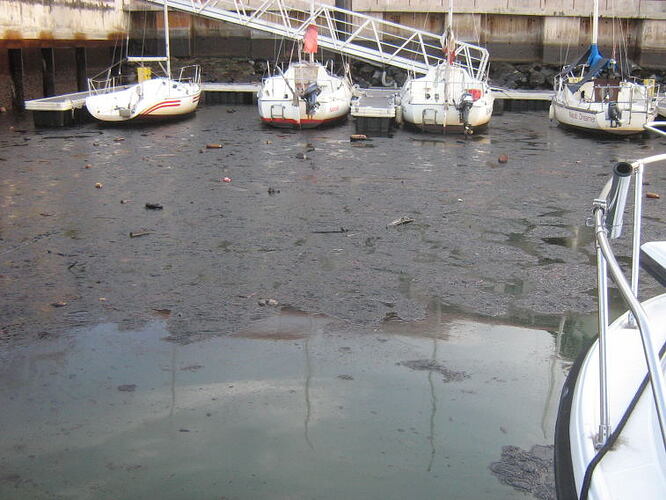Gosh , Bil , you are spot on ! That recent oil spill caused by a small support ship , ramming into a bulk crude oil carrier, right here in the Singapore Straits , was the cause for Calliste to be oil contaminated !
I am sorry to hear that BCC Zygote has met two other , oil spill events, but your information on how to handle them , is valad and invaluable !
Previous to this event, I thought that oil spills and their damage , only happened to other people and their boats , but now I know different.
We are in the midist of having the local oil spill damage asertained by a local marine surveyor , that was hired by the Tanker insurance company, “The Poluter, Pays” , as the saying goes !
Our boat Calliste was berthed in a marina and I will try to attach a photo , here .
This is the oil guck that hit us and our marina, in the middle of the night !
Our learning curve, about responsibility and “their” insurance is almost verticle, at the moment.
We have two sailboats that were affected , my wife Lang’s smaller keelboat and my BCC .
Maybe John Cole , can increase the catagories to include an “Insurance Claims” , title , or something like that ?
I will never forget your advice to me , to get insurance, while I am cruising these, foreign waters , that advice saved me and my boat , from the Tsunami Damage repair costs , occured, to my boat in Dec 2004 , here in S E Asia .
That advice , alone , was worth many, like $ 65,000.00 , thousands of dollars , to my cruising kitty.
Sooo Good On You , Mate !!! And A Big Thank You , for contribuiting , to this forum .
Douglas
